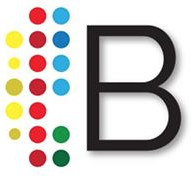This April (4/05/2012), President Obama signed the landmark Jumpstart Our Business Startups (JOBS) Act into law. The law is designed to encourage entrepreneurship both by making it easier and safer to go public and by relaxing certain fundraising requirements imposed by the Securities and Exchange Commission (SEC). The act also has some profound consequences for business researchers and CI analysts, as it changes the SEC filing requirements that certain types of companies (Emerging Growth Companies) have to follow when preparing to go public. Emerging Growth Companies—A New Category Under the JOBS Act
Before jumping into the new SEC filing requirements under the JOBS Act, it is first useful to discuss the types of companies that the new rules apply to: Emerging Growth Companies. Quite simply, Emerging Growth Companies (hereafter EGCs) are those that posted revenues of under $1 billion during their most recent fiscal year. Most IPO-bound companies, with some notable exceptions like Facebook (NASDAQ:FB), meet this criteria. In fact, according to David Westenberg of the high-tech business and economics news sight Xconomy, 90% of all companies that went public prior to December 8th, 2011 would have qualified as EGCs under the JOBS Act. Thus, the changes in the JOBS act will impact the vast majority of companies that plan to file an IPO in the future.
But what about the actual changes to SEC filing requirements?
New Filing Rules under the JOBS Act:
Under the JOBS act, EGCs are able to confidentially file drafts of their registration statement (S-1) for non-public review prior to their actual public filing (adventurous readers might want to check out the full text of the law HERE, specifically Part I section 106). An EGC's S-1 is only made public 21 days before it conducts a roadshow (if you’re not familiar with the term “road show” as it applies to IPO filings, here’s how Investopedia defines it: Road shows refer to when the management of a company that is issuing securities or doing an initial public offering (IPO) travels around the country to give presentations to analysts, fund managers and potential investors.)
So why should librarians, researchers and CI professionals take notice? There are two reasons that this provision of the JOBS act makes our job more difficult:
No Red Herring Left Behind…
Each year, multiple companies withdraw their IPO as a result of poor market conditions or lacking investor enthusiasm. In the past, when a company decided to withdraw its IPO, it did so knowing that valuable and previously confidential information about the business would remain in the public record. With the new confidential filing rules, companies that decide to withdraw their initial public offering can now do so without leaving behind a so called “red herring” S-1 statement (i.e. a publically available draft of their S-1). With the new confidential filing provisions in the JOBS Act, unless EGCs get to the point of conducting a roadshow, no one will have access to their business plan.
7 Week Wait for S-1 Filings?
How long will we have to wait for new S-1 filings to enter the public record?
According to Gus Fuldner, a VP at Benchmark Capital in Menlo Park California, the time commitment between filing to go public and actually selling shares on the open market can be as long as 10 weeks. Why? Often, companies will have to bounce several drafts of their S-1 statement prior to the roadshow, which usually occurs in the final three weeks leading up to the sale of shares on the open market. This means that interested parties could have to wait as long as seven weeks to get access to an IPO-bound company’s business plan. This is not a huge deal, but still could cause frustrating delays for researchers.
Less Transparency: More IPOs
The JOBS act is a very interesting piece of legislation that will have a tremendous impact on the American economy. While I have outlined a couple annoying aspects of the legislation, keep in mind that the ultimate goal of the so called “IPO On Ramp” (the nickname of Part I of the law), is to simplify the process of issuing a public offering. This, in turn, should lead to a steadily rising number of IPOs in the coming years. More IPOs means more public companies and more S-1s, 10Ks and 10Qs for us all to sink our teeth into.
Stay tuned: in my next post I will be describing some of the new scaled back disclosure requirements in the JOBS Act and how these affect what information researchers will have access to.

